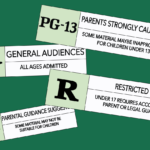Best 21+ Movies to Watch at Home: This exploration delves into a curated selection of mature films, spanning diverse genres and showcasing exceptional cinematic artistry. We’ll examine critically acclaimed titles, explore compelling narratives, and highlight the technical brilliance behind these captivating works, providing a comprehensive guide for discerning viewers seeking enriching home entertainment.
From award-winning dramas to thrilling action flicks and thought-provoking independent films, this guide considers various factors including streaming availability, critical reception, and thematic depth. We aim to offer a balanced perspective, acknowledging the subjective nature of film appreciation while providing valuable insights to assist in your movie selection.
Genre Diversity
Choosing movies for a night in can be a fun challenge, especially when you’re looking for something engaging and appropriate for mature audiences. A diverse selection of genres ensures there’s something for everyone, catering to different moods and preferences. This section explores several genres perfect for 21+ viewers, along with examples of critically acclaimed films.
A wide range of genres offers mature themes and complex narratives often absent from more mainstream productions. These films frequently explore deeper psychological aspects, social commentary, and more nuanced character development. The mature content isn’t simply gratuitous; it serves to enrich the storytelling and create a more compelling viewing experience.
Genre Examples and Critically Acclaimed Films
Below is a list of diverse movie genres suitable for 21+ audiences, along with examples of critically acclaimed films representing each genre. These films often deal with mature themes and complex narratives.
- Thriller: The Silence of the Lambs (psychological thriller), Prisoners (mystery thriller), Nightcrawler (neo-noir thriller)
- Drama: 12 Angry Men (courtroom drama), Manchester by the Sea (character drama), Parasite (dark comedy-drama)
- Crime: The Godfather (crime epic), Pulp Fiction (neo-noir crime), Goodfellas (gangster film)
- Science Fiction: Blade Runner 2049 (neo-noir sci-fi), Arrival (science fiction drama), Gattaca (dystopian sci-fi)
- Horror: The Exorcist (supernatural horror), The Shining (psychological horror), Hereditary (psychological horror)
- Mystery: Knives Out (whodunit), Memento (neo-noir mystery), The Usual Suspects (crime mystery)
- Romance: Before Sunrise (romantic drama), Call Me By Your Name (romantic drama), Brokeback Mountain (romantic drama)
Genre Comparison Table
The table below compares several genres, highlighting their typical themes and mature content. Note that these are generalizations, and individual films within each genre can vary significantly.
| Genre | Typical Themes | Mature Content Examples |
|---|---|---|
| Thriller | Suspense, tension, mystery, deception | Violence, psychological manipulation, intense situations |
| Drama | Character development, relationships, emotional depth | Mature language, complex relationships, difficult life situations |
| Crime | Illegal activities, morality, power | Violence, criminal behavior, mature language |
| Science Fiction | Technology, future societies, philosophical questions | Violence, dystopian themes, complex moral dilemmas |
| Horror | Fear, suspense, the supernatural | Violence, gore, disturbing imagery |
| Mystery | Intrigue, clues, investigation | Violence, deception, morally ambiguous characters |
| Romance | Love, relationships, intimacy | Mature themes of love and relationships, sexual content (depending on the film) |
Streaming Platform Availability
Choosing the right streaming platform for your 21+ movie marathon can significantly impact your viewing experience. Factors like content library size, subscription cost, and user interface all play a crucial role. This section will explore some of the leading platforms offering extensive adult film selections, comparing their strengths and weaknesses.
Streaming services are constantly evolving, adding and removing titles, and adjusting pricing. Therefore, the information presented here reflects a general overview based on current market trends and should be considered a snapshot in time. Always check the individual platform’s website for the most up-to-date details on pricing and content availability.
Subscription Costs and Content Libraries
Several major streaming platforms offer significant libraries of films rated 21+. Netflix, for instance, boasts a vast catalog, constantly updated with new releases and classics. Their subscription tiers vary in price, offering different levels of screen resolution and simultaneous streaming capabilities. HBO Max, known for its high-quality original programming and curated selection of films, provides a smaller but carefully chosen selection of adult content at a competitive price point. Amazon Prime Video, often bundled with Amazon Prime membership, provides access to a broad library including both licensed and original content, with varying degrees of adult-themed films. Finally, platforms like Hulu, while not solely focused on adult content, include a substantial selection within their diverse library. The pricing models and the specific titles available on each platform are subject to change.
User Interfaces and Navigation Features
The ease of navigating a streaming platform is critical for a smooth viewing experience. A user-friendly interface makes it easy to find specific titles, explore genres, and manage your watchlist.
- Netflix: Known for its intuitive interface and personalized recommendations, Netflix generally receives high marks for ease of navigation. Its search function is robust, allowing for detailed filtering by genre, year, actor, and other criteria. The user profile system also allows for personalized content suggestions.
- HBO Max: HBO Max presents a clean and visually appealing interface. While generally easy to navigate, its vast content library can sometimes make finding specific titles more challenging than on platforms with simpler layouts.
- Amazon Prime Video: Amazon Prime Video’s interface can be slightly more cluttered than Netflix or HBO Max, particularly for users unfamiliar with Amazon’s ecosystem. However, its robust search and filtering options compensate for this to some extent.
- Hulu: Hulu’s interface is generally considered straightforward and user-friendly, providing a balanced approach between visual appeal and ease of navigation.
Themes and Narrative Structures
Adult-oriented films often delve into mature themes and employ diverse narrative structures to enhance their storytelling impact. These films frequently explore complex human experiences, pushing boundaries and challenging conventional narratives. The exploration of these themes and structures is what often distinguishes them from more mainstream cinema.
The thematic landscape of 21+ movies is remarkably broad, encompassing intricate character relationships, morally ambiguous situations, and pointed social commentary. Complex relationships, often fraught with tension, desire, and betrayal, form the core of many narratives. Moral dilemmas, where characters grapple with difficult choices with no easy answers, are frequently explored, forcing audiences to confront their own ethical perspectives. Furthermore, these films often serve as powerful vehicles for social commentary, tackling sensitive topics like power dynamics, societal inequalities, and the human condition in its rawest form.
Complex Relationships as Central Themes
Many films rated 21+ utilize complex relationships to drive their narratives. These relationships are rarely simple; they are often characterized by intense emotional connections, power imbalances, and morally grey areas. For instance, the tumultuous relationship between the protagonists in “Blue Valentine” (2010) masterfully depicts the disintegration of a marriage, showcasing the raw emotions and difficult decisions that accompany such a breakdown. Similarly, the film “Marriage Story” (2019) provides a nuanced portrayal of a couple navigating a divorce, highlighting the complexities of love, loss, and co-parenting. These films don’t shy away from portraying the messy realities of human connection.
Moral Dilemmas and Ethical Ambiguity
Films in this category frequently present characters facing difficult moral dilemmas, challenging viewers to question their own values and beliefs. “The Godfather” (1972), for example, showcases the protagonist’s struggle between family loyalty and his conscience as he navigates the treacherous world of organized crime. The film doesn’t offer easy answers; instead, it forces the audience to contemplate the complexities of morality within a corrupt system. Similarly, “Seven” (1995) presents a grim exploration of morality and justice, pushing the boundaries of what viewers consider acceptable.
Nonlinear Narrative Structures
While linear storytelling remains prevalent, many 21+ films experiment with nonlinear narratives, often using flashbacks, flash-forwards, or interwoven timelines to enhance the storytelling experience. “Pulp Fiction” (1994) is a prime example, masterfully employing a nonlinear structure to create a disorienting yet captivating narrative. The film’s fragmented timeline allows for a deeper exploration of its characters and themes, leaving the audience to piece together the narrative puzzle. This technique adds a layer of complexity and encourages active engagement from the viewer. Another example is “Memento” (2000), which uses reverse chronology to tell its story, creating a unique and immersive experience.
Episodic Narrative Structures
Some 21+ films adopt an episodic structure, presenting a series of interconnected events or stories that contribute to a larger narrative. This structure allows for a more diverse exploration of themes and characters. While not strictly episodic, the anthology film “Paris, je t’aime” (2006) utilizes this approach, presenting a collection of short films exploring various aspects of love and life in Paris. Each segment offers a distinct narrative, but they collectively paint a broader picture of the city and its inhabitants.
Directorial Styles and Cinematography
The director’s vision significantly shapes the viewing experience of a film, particularly in mature-themed cinema. Their stylistic choices, from lighting and camera angles to editing techniques, contribute to the overall mood, narrative impact, and thematic resonance. Examining the distinct approaches of several prominent directors working within the 21+ genre reveals a fascinating range of cinematic languages.
The impact of a director’s style extends beyond mere aesthetics; it profoundly influences how the audience interprets the narrative and engages with the characters’ emotional journeys. Consider, for example, the stark contrasts between the gritty realism of one director and the stylized visual poetry of another, both effectively serving their respective stories within the 21+ landscape.
Prominent Directors and Their Signature Styles
Several directors have established recognizable styles within the 21+ film genre. Their consistent use of particular techniques allows for immediate recognition of their work, even across different projects. These styles aren’t merely decorative; they function as integral elements of storytelling, conveying themes and shaping audience perception.
| Director | Signature Style | Example Films (21+) |
|---|---|---|
| David Fincher | Dark, brooding atmosphere; meticulous framing and composition; sharp, often unsettling visuals; slow-motion sequences used for dramatic effect; extensive use of close-ups to emphasize character emotion; distinctive color palettes (often desaturated or cool-toned). | Se7en, Fight Club, The Girl with the Dragon Tattoo |
| Quentin Tarantino | Highly stylized violence; nonlinear storytelling; extended dialogue scenes with witty, often profane banter; vibrant color palettes; jump cuts and other unconventional editing techniques; use of pop culture references; distinctive soundtrack choices. | Pulp Fiction, Reservoir Dogs, Inglourious Basterds |
| Paul Thomas Anderson | Long takes; complex camera movements; naturalistic performances; focus on character psychology and relationships; evocative use of music; a blend of realism and stylistic flourishes. | Boogie Nights, There Will Be Blood, Magnolia |
Acting Performances and Character Development
Exceptional acting performances and nuanced character development are crucial elements in elevating a film beyond mere entertainment. They draw the audience into the narrative, fostering empathy and understanding for even the most morally ambiguous characters. The effectiveness of a film often hinges on the audience’s connection with these characters and their journeys.
The impact of character development is multifaceted. A well-developed character arc allows for audience investment, making their triumphs and struggles resonate deeply. Conversely, a poorly developed character can leave the audience feeling detached and unfulfilled. This development is often achieved through compelling performances from actors who imbue their roles with depth and authenticity.
Memorable Characters and Their Arcs
The complexities of human nature are often brilliantly showcased in mature films. Consider the character of Amy Dunne in David Fincher’s *Gone Girl*. Rosamund Pike’s portrayal is chillingly effective, transitioning from seemingly innocent victim to manipulative mastermind. Her transformation is not abrupt; rather, Pike meticulously reveals layers of Amy’s personality, showcasing her intelligence, vulnerability, and capacity for cruelty. This gradual unveiling keeps the audience guessing, forcing them to question their assumptions about her. The arc is not simply a “good to bad” shift, but a complex exploration of identity and the lengths one will go to regain control.
Another compelling example is the character of Travis Bickle in Martin Scorsese’s *Taxi Driver*. Robert De Niro’s iconic performance captures the alienation and simmering rage of a Vietnam veteran struggling to find his place in a morally decaying urban landscape. His descent into violence is not presented as a simple act of evil, but as a consequence of his profound loneliness and disillusionment. The character arc isn’t one of redemption, but a chilling portrayal of mental deterioration, a descent that resonates with a disturbing realism. The film doesn’t condone his actions, but it makes them tragically understandable given the context of his character’s experiences and internal struggles.
Exceptional Acting Performances in 21+ Movies
Several films showcase exceptional acting performances that contribute significantly to the overall impact. Isabelle Huppert’s performance in *Elle* (2016) is a masterclass in portraying a complex woman navigating trauma and revenge. Her character, Michèle Leblanc, is unflinchingly resilient and shockingly self-aware, making her both unsettling and compelling. The film explores themes of power dynamics and the intricacies of female agency through Huppert’s powerful performance. Similarly, Joaquin Phoenix’s performance as the Joker in Todd Phillips’ *Joker* (2019) is a tour-de-force, showcasing a descent into madness with unsettling realism. Phoenix’s physical and emotional transformation into the character is remarkable, creating a sympathetic portrayal of a man pushed to the brink. The character’s arc is a study in social alienation and the fragility of the human psyche. These performances demonstrate the power of acting to elevate a film’s themes and narrative, leaving a lasting impact on the audience.
Impactful Soundtracks and Music: Best 21+ Movies To Watch At Home

A film’s soundtrack is often an unsung hero, subtly shaping our emotional responses and deepening our connection to the narrative. More than just background noise, a well-crafted soundtrack can elevate a scene from good to unforgettable, amplifying the tension, joy, or sorrow unfolding on screen. The right music can even become intrinsically linked to the film itself, evoking powerful memories and emotions long after the credits roll.
The synergy between picture and sound is crucial; a soundtrack doesn’t merely accompany the visuals; it actively interacts with them, enhancing the mood, atmosphere, and emotional impact of the film. A carefully chosen score can heighten suspense, underscore a character’s internal struggle, or provide a sense of place and time. Conversely, a poorly chosen or incongruous soundtrack can detract from the overall viewing experience, jarring the audience and breaking the spell of the narrative.
Memorable Soundtracks and Their Impact
Several films stand out for their exceptionally memorable and impactful soundtracks. These scores are not simply background noise; they are integral components of the storytelling, enriching the narrative and profoundly affecting the audience’s emotional engagement. The following examples illustrate how music enhances different aspects of filmmaking.
- Blade Runner 2049 (2017): Hans Zimmer and Benjamin Wallfisch’s score for Blade Runner 2049 is a masterpiece of atmospheric electronic music. The melancholic, synth-heavy soundscape perfectly captures the film’s dystopian setting and the protagonist’s existential loneliness. The music’s haunting beauty complements the film’s stunning visuals, creating a deeply immersive and emotionally resonant experience. The use of low, resonant tones and echoing synthesizers adds to the feeling of vast, empty spaces and the character’s isolation.
- Interstellar (2014): Hans Zimmer’s score for Interstellar is equally powerful, utilizing a blend of orchestral and electronic elements to create a sense of awe and wonder. The soaring strings and pulsating rhythms perfectly accompany the film’s breathtaking visuals of space and time, while more somber passages underscore the emotional weight of the characters’ journeys and sacrifices. The use of organ-like sounds adds a sense of the cosmic and the vastness of space.
- The Social Network (2010): Trent Reznor and Atticus Ross’s score for The Social Network is a masterclass in minimalist electronic music. The film’s score uses repetitive motifs and understated instrumentation to create a sense of unease and tension, perfectly reflecting the film’s themes of ambition, betrayal, and the isolating nature of success. The subtle yet powerful use of electronic sounds creates a sense of unease and tension, reflecting the film’s underlying themes.
Cultural Significance and Social Commentary
Many films, particularly those aimed at mature audiences, delve into complex social and cultural issues, often reflecting and shaping societal perceptions. These films don’t simply entertain; they provoke thought, spark dialogue, and contribute to ongoing cultural conversations. Analyzing their cultural significance allows us to understand the societal contexts in which they were created and the impact they have had on subsequent discussions and cultural shifts.
The following sections will examine the cultural significance and social commentary present in several notable 21+ films. Each film’s contribution to cultural discourse will be detailed, highlighting its reflection of societal issues and its lasting impact.
Pulp Fiction (1994), Best 21+ Movies to Watch at Home
Pulp Fiction’s cultural impact is undeniable. Its non-linear narrative structure, stylized violence, and memorable dialogue redefined independent cinema and influenced countless films that followed.
- Representation of Violence: The film’s graphic depiction of violence, while controversial, sparked discussions about its portrayal in media and its desensitizing effects on audiences.
- Subversion of Genre Tropes: Quentin Tarantino’s playful subversion of crime film conventions challenged traditional narratives and expectations, paving the way for a more self-aware and postmodern approach to filmmaking.
- Cultural Influence on Language and Style: The film’s quotable dialogue and unique style profoundly impacted popular culture, with phrases and stylistic choices becoming widely imitated.
Do the Right Thing (1989)
Spike Lee’s Do the Right Thing is a powerful exploration of racial tension and social unrest in a Brooklyn neighborhood on a sweltering summer day.
- Racial Tensions and Social Commentary: The film vividly depicts the simmering racial tensions between the predominantly Black residents and the Italian-American business owners, culminating in a tragic eruption of violence.
- Cultural Representation of African American Community: Do the Right Thing offered a nuanced and complex portrayal of African American life, challenging stereotypical representations prevalent in mainstream cinema.
- Impact on Race Relations Dialogue: The film’s unflinching portrayal of racial conflict sparked crucial conversations about race, prejudice, and social justice, contributing to ongoing dialogues about systemic racism.
Parasite (2019)
Bong Joon-ho’s Parasite, a South Korean thriller, achieved global acclaim for its sharp social commentary and masterful storytelling.
- Class Inequality and Social Stratification: The film starkly depicts the vast chasm between South Korea’s wealthy elite and its impoverished underclass, highlighting the systemic inequalities that perpetuate this divide.
- Global Relevance of Class Conflict: Despite its Korean setting, the film’s themes of class struggle and social disparity resonate globally, making it relevant to audiences worldwide grappling with similar issues.
- Critical Acclaim and Cultural Impact: Parasite’s success, including its Best Picture win at the Oscars, signifies a growing global appreciation for diverse cinematic voices and narratives that address crucial social issues.
Visual Effects and Production Design
The visual landscape of a film is as crucial as its narrative, often shaping the audience’s emotional response and immersion in the story. Exceptional visual effects (VFX) and production design can elevate a movie from good to unforgettable, creating believable worlds, fantastical creatures, and breathtaking environments. This section examines several films that masterfully blend these elements, showcasing the artistry and technical prowess involved.
Visual effects encompass a broad range of techniques, from practical effects like miniatures and prosthetics to digital compositing and CGI. Production design, on the other hand, encompasses the overall visual aesthetic of a film, including set design, costume design, and art direction. The synergy between these two disciplines is paramount in creating a cohesive and impactful visual experience.
Examples of Stunning Visual Effects and Production Design in Film
Several films stand out for their exceptional visual achievements. “Blade Runner 2049” (2017) presents a meticulously crafted dystopian future, utilizing stunning CGI to create sprawling, rain-soaked megacities and breathtakingly detailed holographic effects. The production design, with its emphasis on gritty realism and neon-drenched aesthetics, perfectly complements the film’s melancholic tone. In contrast, “Avatar” (2009) revolutionized motion capture technology and CGI to create the vibrant, alien world of Pandora, showcasing lush bioluminescent flora and fauna. The intricate detail and immersive environments established a new benchmark for visual storytelling in cinema. Another example is “Pan’s Labyrinth” (2006), which masterfully blends practical effects with CGI to create a surreal and nightmarish world, seamlessly integrating fantastical creatures with the grim realities of the Spanish Civil War. The stark contrast between the harsh reality and the fantastical realm further enhances the film’s impact.
Comparative Analysis of Visual Styles
The following table compares these films based on their visual styles, production design, and visual effects.
| Film | Visual Style | Production Design | Visual Effects |
|---|---|---|---|
| Blade Runner 2049 | Gritty, dystopian, neon-drenched | Detailed, sprawling megacities, realistic yet futuristic | Advanced CGI, holographic effects, rain effects |
| Avatar | Vibrant, lush, bioluminescent | Detailed alien flora and fauna, immersive environments | Groundbreaking motion capture, extensive CGI, realistic environments |
| Pan’s Labyrinth | Surreal, nightmarish, contrasting realities | Detailed historical setting, stark contrast between reality and fantasy | Blend of practical and CGI effects, seamlessly integrated fantasy elements |
Final Thoughts

Ultimately, the best 21+ movies to watch at home are those that resonate personally. This guide offers a starting point, highlighting films that have achieved critical acclaim and cultural impact. By exploring diverse genres, thematic depth, and directorial styles, viewers can curate a personalized selection that aligns with their tastes and preferences, ensuring a fulfilling cinematic experience from the comfort of their own homes. Happy watching!

![Upcoming 21+ Movies in [Year]](https://scholnews.com/wp-content/uploads/2025/01/0rC4a3_0xpeZBqD00-150x150.jpg)




